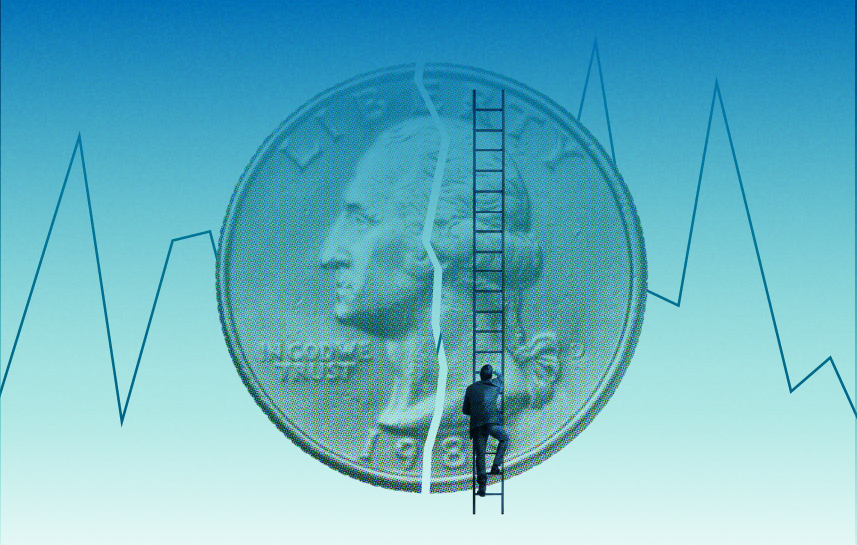What to Invest in During High Inflation
These inflation hedges can help protect your portfolio.

While high inflation hasn’t been the sore spot for US consumers that it was in 2022, inflation has remained sticky in 2024. The Consumer Price Index rose 3.4% in April, only a hair down from the 3.5% reported in March. Inflation may be starting to trend down again, albeit slowly, but investors may still want to add inflation protection to their portfolios. After all, inflation doesn’t just affect current consumption, it also eats into investment returns and erodes wealth.
The Best Investments During High Inflation
There are different ways to protect an investment portfolio from high inflation. For example, Morningstar’s Christine Benz suggests that younger investors should maintain ample stock exposure. Retirees and preretirees who depend on their investments for cash flows may need to seek out inflation protection in fixed-income assets. Some investors may even use cash as an inflation hedge.
Here are some investment options to consider when thinking about what to invest in during high inflation.
Inflation Bonds Offer High Yields, but There Are Drawbacks
Buying inflation bonds, or I bonds, is an attractive option for investors looking for a direct hedge against inflation. These Treasury bonds earn monthly interest that combines a fixed rate and the rate of inflation, which is adjusted twice a year. So, yields go up as inflation goes up. I bonds issued from May 2024 through November 2024 yield 4.28%.
While I bonds are a safe hedge against inflation, they aren’t a panacea. One major drawback is the purchase limit of $10,000 per year. This purchase constraint is particularly restricting for larger investors. Some investors may also have issues with I bonds’ lack of liquidity. Rather than making regular interest payments, I bonds only pay out when they are sold—and that’s only possible at least 12 months after purchase. Otherwise, the bonds pay out when they reach maturity 30 years after issuance.
The Best Mutual Funds and ETFs for High Inflation
Below are some of Morningstar analysts’ top mutual fund and exchange-traded fund picks in two areas that directly hedge against rising inflation: Treasury Inflation-Protected Securities and commodities.
TIPS funds offer a straightforward hedge against inflation. The values of the underlying bonds adjust up and down as inflation rises and falls. TIPS typically yield 2% or less, lower than their I-bond peers. These low yields mean that TIPS face higher inflation risk than other bonds of similar maturity.
Commodities funds offer another inflation hedge. Commodities prices, which are sensitive to economic growth, make up an important part of inflation. Commodities funds can capture spikes in commodities prices that precede inflation increases. Still, Morningstar’s director of manager research Russ Kinnel recommends keeping commodities fund positions small because commodities prices are volatile and hard to predict.
Here are some of the best TIPS and commodities funds for high inflation:
- Vanguard Short-Term Inflation-Protected Securities Index VTAPX
- Vanguard Short-Term Inflation-Protected Securities ETF VTIP
- Schwab U.S. TIPS ETF SCHP
- Pimco CommoditiesPLUS Strategy PCLIX
For additional commentary on Vanguard Short-Term Inflation-Protected Securities Index, read Kinnel’s Grading the Inflation Hedges.
Should You Buy Gold During High Inflation?
Despite what proponents of gold may lead some investors to believe, there hasn’t been a consistent pattern of investors aiming for gold during periods of high inflation. As is the case with other commodities, it’s impossible to determine how much gold should be worth and whether the price of gold should go up or down in the future. At the end of the day, returns on gold are random, and investing at the right time is exceedingly difficult.
Investors looking for consistent inflation protection are better off finding it elsewhere.
The Best Stocks for High Inflation
Equities aren’t a reliable inflation hedge in the short run, but they tend to be more resilient longer term. Many companies have the power to raise prices to pass along the burden of higher supply chain costs to their consumers. Other companies aren’t dependent on the cost of raw materials to maintain their profit margins. But not all companies have that kind of pricing power.
Overall, inflation won’t have a uniform impact on the stock market, so it’s important to seek out high-quality companies that can weather the storm. High inflation can also create buying opportunities for stocks whose long-term prospects contrast with price drops that come from short-term market jitters.
Below are the stocks of high-quality companies that are trading at a steep discount, according to Morningstar analysts. These companies also pay out consistent dividends—evidence of their strong balance sheets.
There Is No One-Size-Fits-All Approach to Investing During High Inflation
The investments covered in this article aren’t the only inflation hedges available to investors. If they think high inflation will persist, some investors may consider borrowing money to invest in real estate, which allows them to repay the debt with inflated dollars. Again, there is no one-size-fits-all approach, and high inflation will affect portfolios differently. For example, inflation typically has a greater effect on bond-heavy portfolios than stock-heavy ones. So, investors with 80% of their portfolios in stocks probably shouldn’t make any drastic changes to protect against inflation. Bond-heavy investors, however, may consider implementing some inflation-hedging strategies.
Still, investors should be mindful that inflation isn’t the only thing affecting their portfolios. Taking a holistic approach to portfolio construction that accounts for a variety of potential risks while focusing on specific goals will generally lead to better outcomes. As Russ Kinnel said, “You don’t want inflation protection to dominate your portfolio.”
A version of this article was published on Jan. 17, 2023.
The author or authors do not own shares in any securities mentioned in this article. Find out about Morningstar’s editorial policies.

/s3.amazonaws.com/arc-authors/morningstar/96c6c90b-a081-4567-8cc7-ba1a8af090d1.jpg)
/cloudfront-us-east-1.images.arcpublishing.com/morningstar/KD4XZLC72BDERAS3VXD6QM5MUY.png)
/cloudfront-us-east-1.images.arcpublishing.com/morningstar/ZYJVMA34ANHZZDT5KOPPUVFLPE.png)
/cloudfront-us-east-1.images.arcpublishing.com/morningstar/WC6XJYN7KNGWJIOWVJWDVLDZPY.png)
:quality(80)/s3.amazonaws.com/arc-authors/morningstar/96c6c90b-a081-4567-8cc7-ba1a8af090d1.jpg)